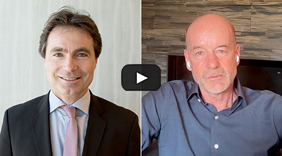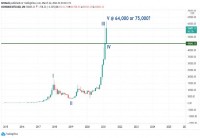|
Cross-Trading Trends Futures trading is attracting money managers who previously traded stocks or other securities, not futures. Part of the attraction may be that bank credit is now hard to get and futures instruments enable you to put on more trades with the same capital. At the same time, some commodity trading advisors have become interested in cash equities. Here, several people who work with CTAs, futures commission merchants and hedge funds comment on the trends. Jay Lefkowicz, a principal of Saratoga Futures, an introducing broker that works with a number of FCMs, says traders are crossing over in both directions: “One major trend we are seeing is that more players are trading a variety of asset classes. We have seen traditional equity hedge fund managers begin trading index futures and, at times, commodity futures. Conversely, we see quant futures traders applying their models to cash equities. By working with a number of multi-asset class futures commission merchants, our clients can deal with one bank and cross-margin their holdings. Another trend is that more money is moving into managed accounts. Managed accounts create logistical difficulties for transaction allocation and settlement. By utilizing the right futures commission merchant and trading platform, we can help managers streamline the process.” Cross-Trading Trends Paul Compton A fund may trade both stocks and stock index futures. How does risk management work for multiple asset classes? We asked Paul Compton, head of product management in SunGard’s alternative investment business. Mr. Compton says the key is to integrate multiple asset-class positions and calculate net exposures: “The first object is to have all the positions on the same systems, from both the trade processing perspective and the position and risk management perspective. We offer tools that deal with multiple assets, all in a single framework—commodities, futures, options, stocks, bonds. You don’t want to do your cash equity risk analysis and stock futures risk analysis separately and then try to put them together, because then they don’t fit. Our buy-side system has cross-asset coverage. This is not an empty box application but a whole service, including our extensive data coverage. It does not make sense for customers to build it themselves. With regard to risk management, there are different levels. You have to drill down to the exposures to individual stocks and futures, long and short. Then you’ll see the net exposures by sector, country, etc. A second level of risk analysis, which our APT product does well, is to look at the economic drivers of asset prices and the correlations. If you have an exposure to the US dollar/euro exchange rate, say, you can analyze how it will affect your portfolio indirectly through patterns of correlations and relationships. We can do this in real time, or update as frequently as the portfolio manager wants. APT does well with extreme events. We saw that last year. It signaled high risk in the weeks before and after the Bear Stearns and Lehman Brothers collapses.” What happens as traders move into new asset classes? We asked Tony Scianna, executive vice president of SunGard’s brokerage & clearance unit. He says the company offers a complete suite of products from execution to clearance for listed derivatives and provides services to more than 105 futures commission merchants globally. “As new asset classes and futures markets develop, they get integrated into our software. So, for instance, SunGard supports carbon credit futures at a number of exchanges, including Chicago Climate Futures Exchange, LCH Emissions market, ICE, EEX and NYMEX.” |
|
This article was published in Opalesque Futures Intelligence.
|





 RSS
RSS











